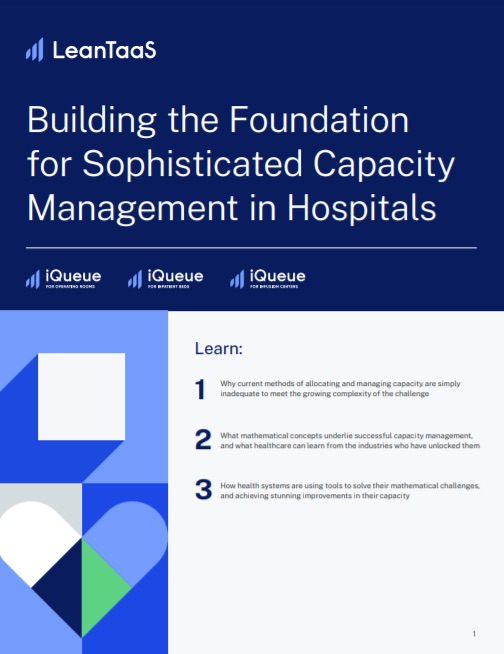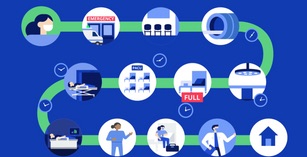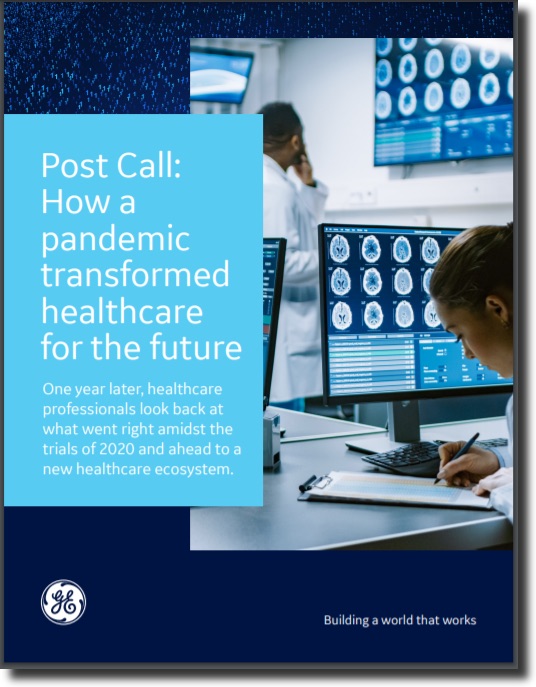Electronic Health Records (EHR, EMR)
As healthcare facilities work to recover from the impact of COVID-19, they face ever-growing patient volumes. The need to match hospital capacity with patient demand is beyond the abilities of EHR systems and manual scheduling. The sophisticated algorithms used by the LeanTaaS iQueue suite of solutions focus on one asset each: inpatient beds, infusion center chairs and operating rooms. The powerful tools enable hospitals to use their assets more efficiently for increased revenue, lowered costs and improved patient outcomes.
Many facilities are still clearing elective surgery backlogs created because of the COVID-19 pandemic, so streamlining the OR scheduling process is more important than ever. But relying on manual scheduling methods can lead to unfilled time or missed communications. iQueue for Operating Rooms by LeanTaaS reduces errors and optimizes your room and time placement.
Managing inpatient bed capacity presents a challenge even in normal times, but even more so in crisis situations. Inefficiencies along a patient journey can cost an estimated $9,000 per bed per year – a significant impact on a hospital’s bottom line. Manual scheduling simply can’t keep up with the complex factors influencing bed capacity. iQueue for Inpatient Beds by LeanTaaS is a cloud-based platform that uses predictive analytics and near real-time data to empower frontline staff to make the right decisions on bed scheduling.
Every minute of operating room time can represent hundreds of dollars in revenue, yet block time is going unused in many hospitals. This leads to unnecessary costs, lost revenue and dissatisfied patients and staff. iQueue for Operating Rooms by LeanTaaS helps surgeons and clinic schedulers easily find and request currently unbooked OR time on their mobile device.
Most infusion centers face the same three problems: long patient wait times, underutilized resources and unhappy nursing staff. EHRs and manual scheduling methods aren’t equipped to handle the complexity of scheduling infusion appointments, but iQueue for Infusion Centers by LeanTaaS uses algorithms to manage schedules that ramp up and down smoothly and use staff and resources more effectively.
How the Pandemic and Medical Monitor Technology from LG has Advanced the Success of Remote Teleradi…
The COVID-19 pandemic brought a rise in chest X-rays and CT scans related to the disease. With on-site staff limited for their safety, teleradiologists allowed hospitals and outpatient providers to be supported around the clock. LG monitors help make it possible for radiologists to read images remotely through high-resolution monitors and supportive software that allows care teams to view the same image and collaborate on a diagnosis.
While the 'robot' aspect of RPA gets most of the attention, successful implementation centers on the people and processes that will be impacted by the technology – and in a healthcare system where burnout is rampant, there are plenty of those.
Technology has proved to be a blessing for consumers who today have a plethora of care options and improved access to care. This is not the case with frontline providers who continue to suffer from burnout and fatigue.
Even when things go back to some semblance of normal and care teams return to their regular processes, burnout will still be felt. It's up to healthcare leaders to help manage workplace stress.
SPONSORED
During the COVID-19 pandemic, health systems were forced to reevaluate their procedures, which presented an opportunity to increase efficiency in all aspects of their operations. Lessons taught by the pandemic can help health systems eliminate inefficiency and reduce operating costs while increasing quality of patient care. Using portable technology and AI-enabled applications along with management of patient data, providers can make more informed clinical decisions for better patient outcomes.










